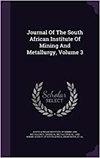斯威士兰Havelock矿尾矿资源勘探的质量控制
IF 0.9
4区 材料科学
Q3 Materials Science
Journal of The South African Institute of Mining and Metallurgy
Pub Date : 2022-08-22
DOI:10.17159/2411-9717/1612/2022
引用次数: 1
摘要
质量保证和质量控制(或QAQC)在保障矿产勘探和矿山开发过程中产生的数据的可信度方面起着关键作用,也是资源估计和报告以及采矿投资报告代码要求的一部分。在质量管理方面执行良好的政策和工作规程将产生可靠的信息,这对今后采矿项目的决策是至关重要的。使用经过认证的参考物质,即标准样品、空白样品和重复样品,证明在确保数据在精密度、准确性和样品污染方面的可信度方面是有效和高效的。在Havelock矿温石棉尾矿库设施的勘探方案中,使用了53个钻孔的1254个样品,QC的实践很好地证明了这一点。应用不同的统计工具对这些样品的测定结果进行分析。结果表明,在Havelock勘探项目中建立的质量控制实践符合行业最佳实践指南。所描述的资源表明,Havelock的尾矿材料可能成为全球镁市场的重要供应来源。本文章由计算机程序翻译,如有差异,请以英文原文为准。
Quality control in tailings resource exploration at Havelock Mine, Eswatini
Quality assurance and quality control (or QAQC) plays a key role in safeguarding the level of confidence of the data generated during mineral exploration and mine development, and is also part of the reporting code requirements for resource estimation and reporting, as well as mining investment. Implementation of good policies and working protocols in quality management will result in the generation of reliable information, which is critical for decision-making on the future of the mining project. The use of certified reference materials, i.e., standard, blank, and duplicate samples, proves effective and efficient for ensuring the level of data confidence in terms of precision, accuracy, and sample contamination. This is well demonstrated by the practice of QC in the exploration programme for the chrysotile tailings storage facilities of Havelock Mine, using 1254 samples from 53 drill-holes. Different statistical tools were applied to analyse the assay results from these samples. The outcome substantiates that the QC practice established during the Havelock exploration project is aligned to best practice guidelines in the industry. The resource delineated indicates that the tailings material at Havelock could potentially become a significant source of supply to the global magnesium market.
求助全文
通过发布文献求助,成功后即可免费获取论文全文。
去求助
来源期刊
CiteScore
1.50
自引率
11.10%
发文量
61
审稿时长
4-8 weeks
期刊介绍:
The Journal serves as a medium for the publication of high quality scientific papers. This requires that the papers that are submitted for publication are properly and fairly refereed and edited. This process will maintain the high quality of the presentation of the paper and ensure that the technical content is in line with the accepted norms of scientific integrity.

 求助内容:
求助内容: 应助结果提醒方式:
应助结果提醒方式:


